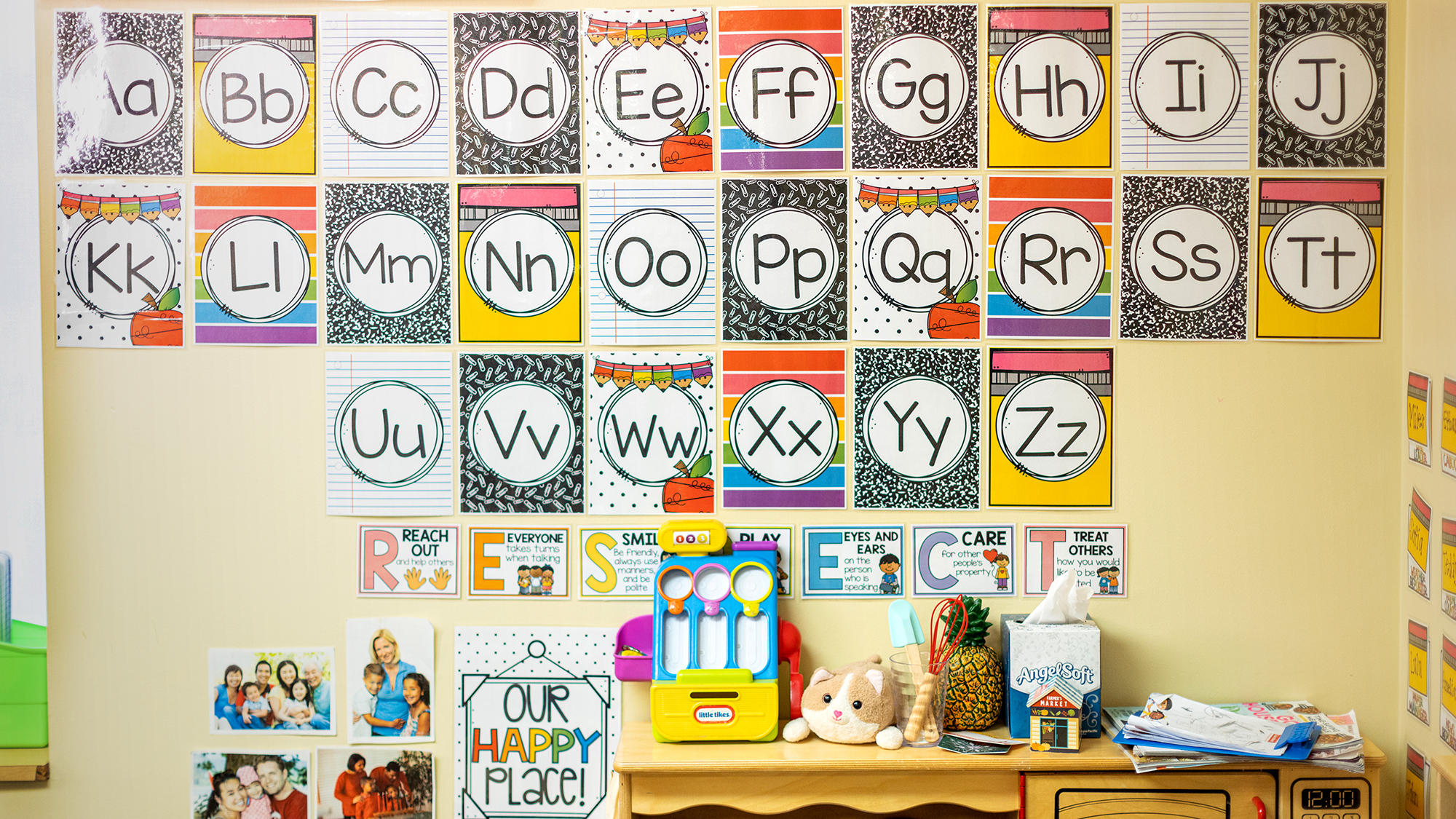
Books are great—no argument there. But there are lots of ways early educators can incorporate literacy into their classrooms and curriculum besides traditional story time. Teachers can introduce new words to young children via music and nursery rhymes, and kids can get familiar with letters and words when they see them on the wall or on objects in play stations.
We talked to four early learning experts—Emly Daberkow, Carol Burk, and Kelly Jones, early childhood education specialists at the Nebraska Department of Education, and Amy Schmidtke, the director of program development at the Buffett Early Childhood Institute at the University of Nebraska. They suggested five ideas for creating a classroom that fosters children’s early literacy skills.
Read our previous story in this early literacy series about how families can support children’s reading and language skills and follow NDE Step Up to Quality on Facebook for more reading tips.
Model Reading and Language Skills for Young Children
Children imitate what is modeled to them. Children will talk, read, and write like the adults in the room. Providing children with writing materials in the centers in your classroom—along with access to a wide variety of books—will allow them to engage with these materials in a meaningful way. When children are provided with literacy materials, they tend to act in literate ways.
Surround Kids with Letters and Words
The environmental print in your classroom can and should be a learning tool, providing opportunities for adults and children to interact with letters and words. Providing children with materials such as road signs in your block center, grocery ads in the writing and art area, or food box labels in your dramatic play reinforces the idea that children first learn to “read” print by seeing these common things all around them.
Create a Print-Rich Environment with Labels and Signs
Label everyday objects, centers, and storage areas with pictures and words. For example, label the “art supplies” with both a picture of crayons and the words “art supplies.” This builds word recognition and helps children associate words with objects.
Story Stones and Props for Retelling
Provide story stones or small props that represent characters or events from familiar stories, encouraging children to retell the story in their own words. This supports comprehension and language skills while also reinforcing narrative structure.
Don’t Forget About Music and Rhymes
Use nursery rhymes in your classroom to incorporate early literacy. This is a great way to introduce new vocabulary, as well as rhyming, to children. You can also incorporate nursery rhymes into the other centers of your classroom. For example, Humpty Dumpty can lead to great science experiments and conversations, which leads to additional new vocabulary and concepts.

